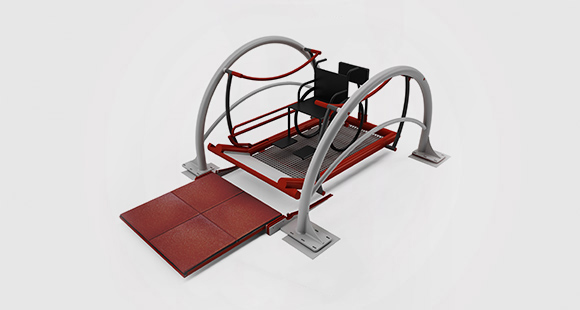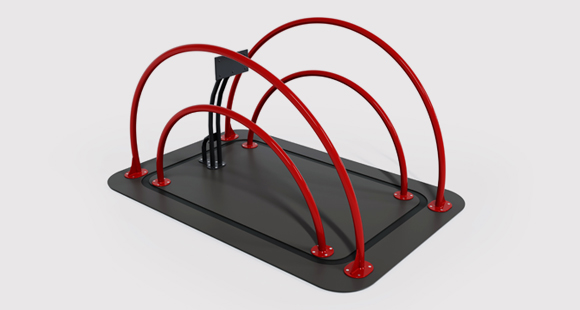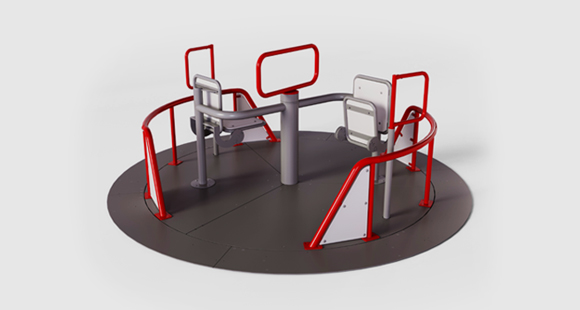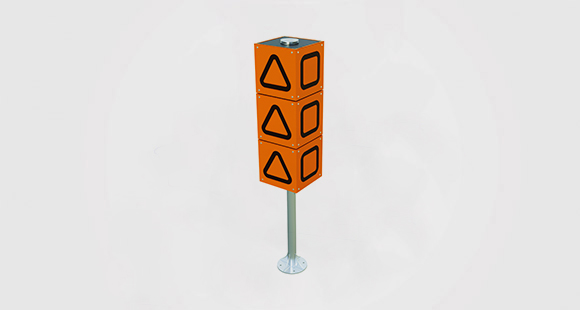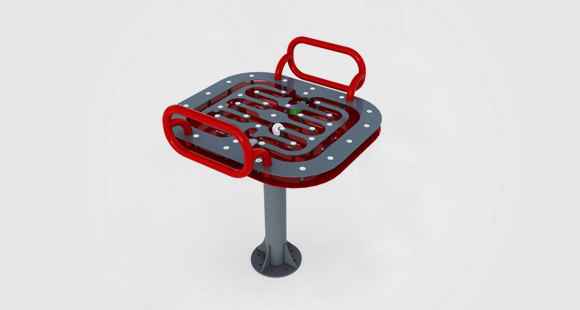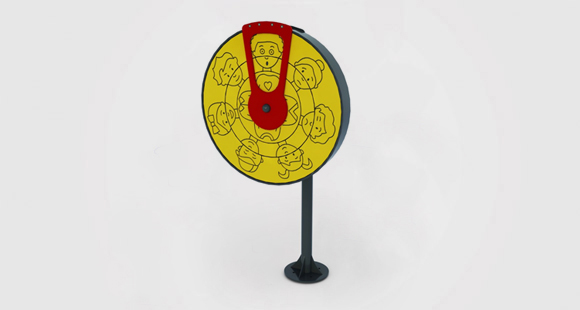Medical devices We design to help
Is it possible to perform rehabilitation on the playground?
The playground located at the hospital, day care center for people with disabilities, foundation or rehabilitation center is a perfect place not only for fun, but also for rehabilitation. The condition is the appropriate organization of the playground space and equipment allowing to improve motor functions and conducting neurological rehabilitation while playing.
Inclusive devices on a special playground provide a number of benefits not only for users, but also for therapists. It is important that they allow for use by both non-disabled and disabled people. In a situation where a person with a disability is not able to operate the device on his own, a non-disabled person can take over this function or support movement, set a pattern and improve the coordination of a person with a disability.
Rehabilitation in the playground is "hidden" rehabilitation. Children who undergo it are often tired because it dominates their lives and involves huge effort. In the conditions of the playground, you can cleverly combine play with improvement in a way that is practically imperceptible to the child.
It means also a chance for the therapists to perform the therapy in more pleasant form than typical indoor rehabilitation.
For who?
Inclusive devices are therefore recommended for non-disabled users and for people with disabilities of all ages, resulting in moving in a wheelchair, crutches, and a Walker or rollator. They are also suitable for people with intellectual disabilities and neurological disorders (post-stroke rehabilitation, MS). Some of them were also designed for people with visual disabilities. When it comes to supporting the activity of seniors, they can support their rehabilitation and maintain fitness both in terms of movement and cognitive functions, contributing to the prevention of dementia and the onset of Alzheimer's disease.
Playing on the playground, of course, concerns mainly children, but in the case of people with disabilities, also young people and adults who can benefit from care in nursing homes, hospitals or other day care centers will benefit. Therefore, it is worth looking at the recreation area belonging to the place of residence of people with disabilities as the possibility of conducting additional, attractive therapy in conditions other than therapeutic rooms or standard exercise areas.
– Inclusive devices are important projects that fill the market gap and give the opportunity to equalize the chances of people in wheelchairs in terms of fun and rehabilitation in the open air – explains Ewelina Tobolska, MAJA Foundation, Gdańsk, Poland.
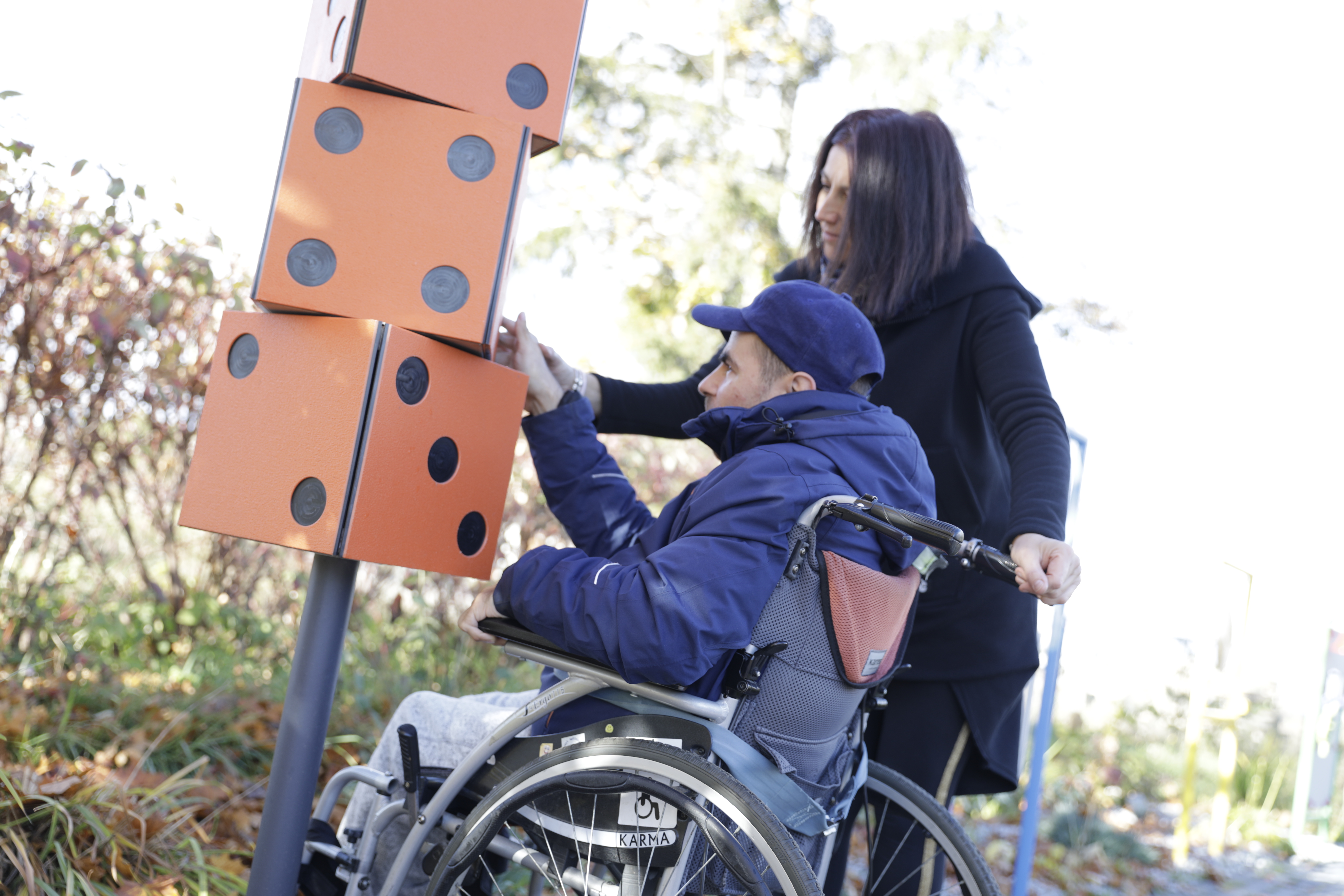
Exercise therapy
The use of inclusive devices is primarily the possibility of conducting exercise therapy. Operating the machine requires directional, deliberate movement and, over time, development of strength and coordination. Kinesiotherapy on devices can be supported by a caregiver, therapist, sibling or friend who will compensate the companion's disability by activating the device and, over time, teach them correct movement patterns by repeating a given movement, even without the use of force. Operating the devices also means increasing the range of motion, especially the upper limbs.
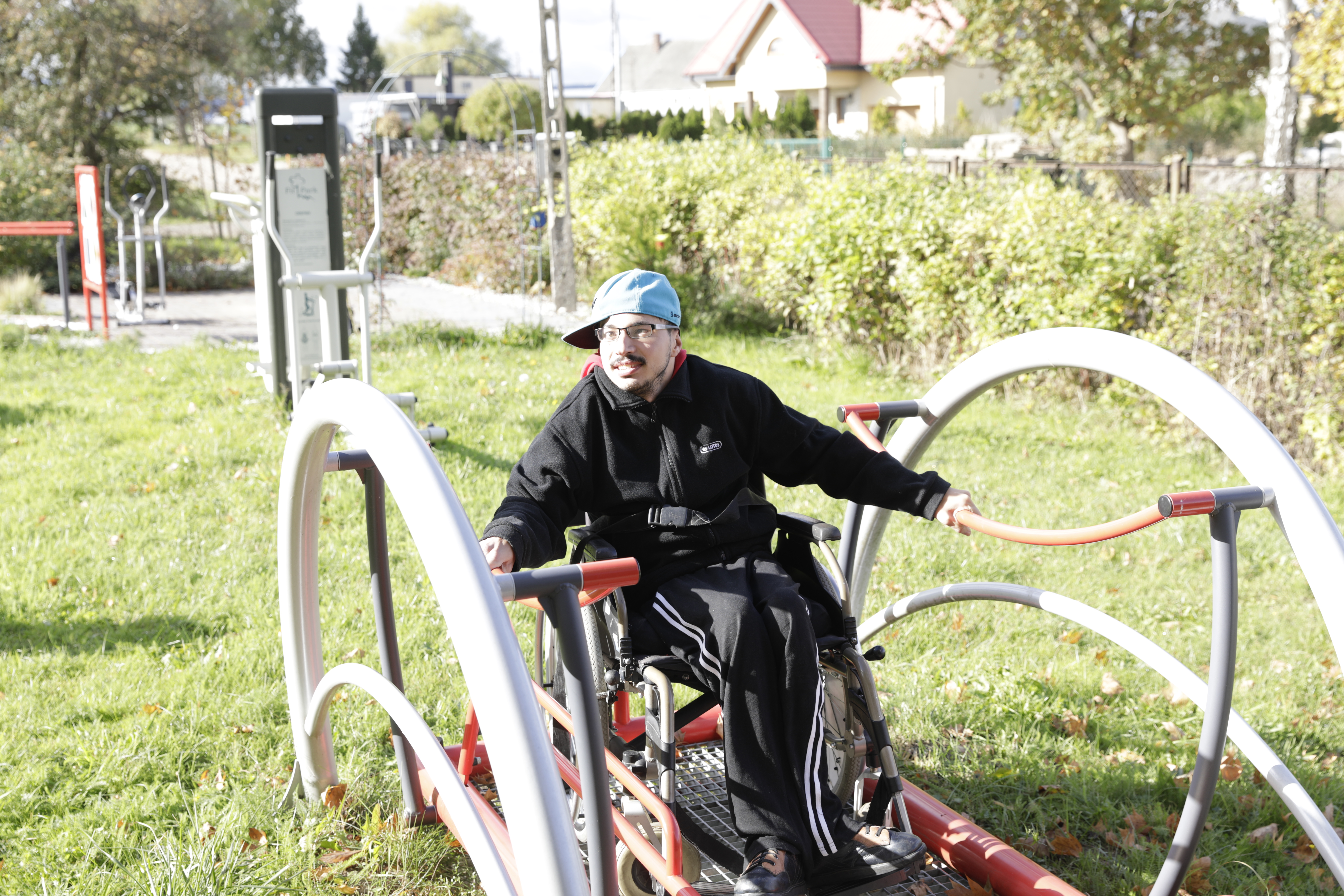
– The swings give the body movement so the child can learn to develop and plan that movement – explains Małgorzata Cieplik – Pominkiewicz, NDT Bobath and sensory integration therapist. – It is also the work of the senses, like the vestibular sense, extremely important for learning movement for children with disabilities. It is also great fun, the possibility of observing other children, being integrated with peers. Seeing a smile on the face of a child, playing together with parents or siblings, even without disabilities, enriches the therapy and the opportunity to spend time together – says the therapist.
Neurological therapy
When it comes to neurological rehabilitation, the use of devices for sensory integration therapy and stimulation of the proprioceptive system through the impact of stimuli on the sense of sight, balance and vestibular, is a huge advantage, often underestimated in the context of playing on the playground. Exercises have a positive effect on the improvement of cognitive processes, they also include eye-hand coordination training. This type of coordination is responsible for correctly judging distances and allows you to plan and execute your movements accurately and purposefully.
Due to the possibility of guiding the fingers along the milled line of the pattern, the device is also suitable for blind people or people with vision problems. Embossed letter tiles act on receptors on the palm of your hand.
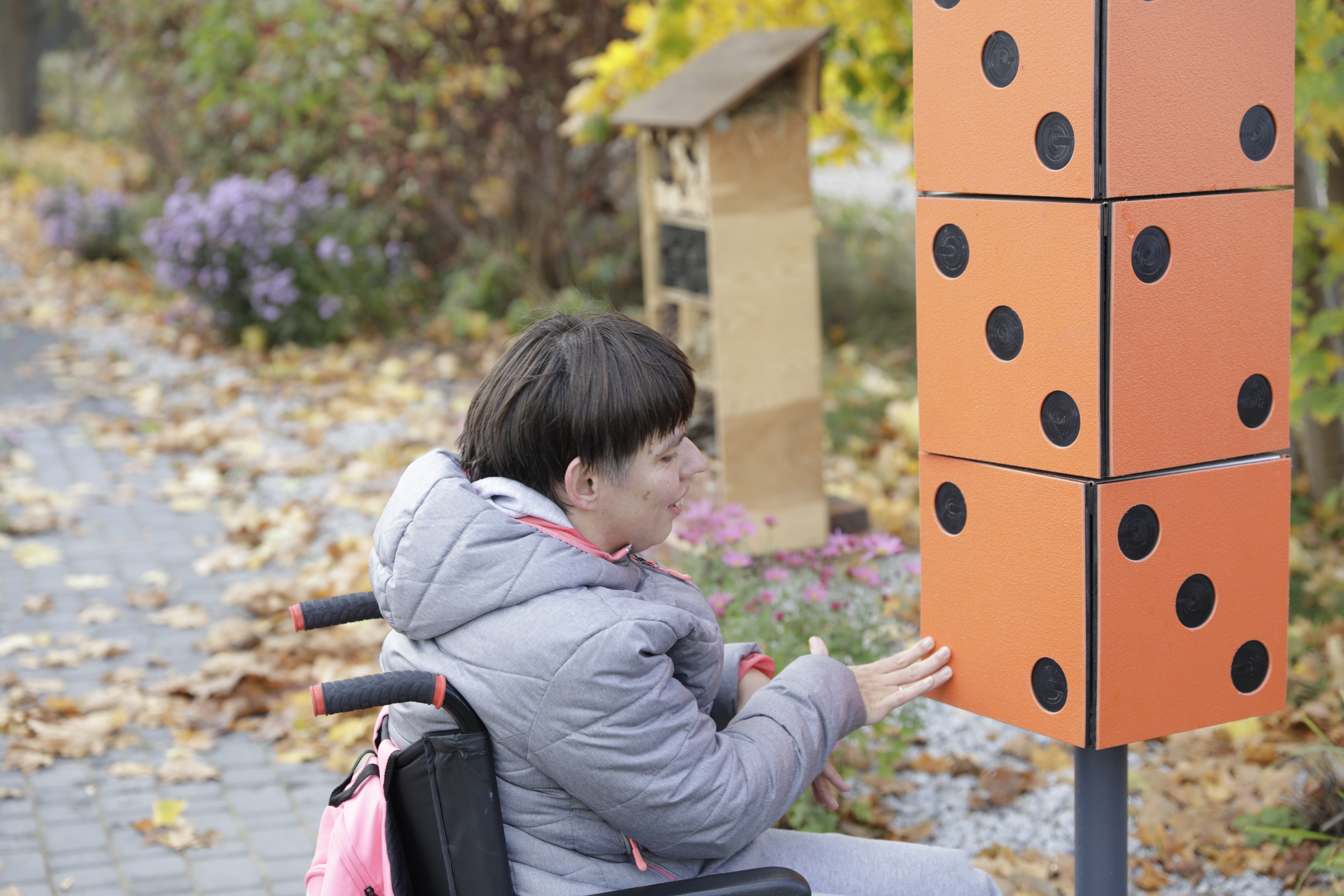
When it comes to propelling devices with rotors, the indications for their use are multiple sclerosis, post-stroke conditions, two-limb palsy, spastic paralysis, Parkinson's disease and other neurological and muscle-neurological diseases.
Social skills therapy
The opportunity to participate in play in the playground is also an opportunity for integration, development of social skills, independence and, by the way, learning empathy and understanding for non-disabled people who have the opportunity to find out that people with disabilities have the same right and need to play.
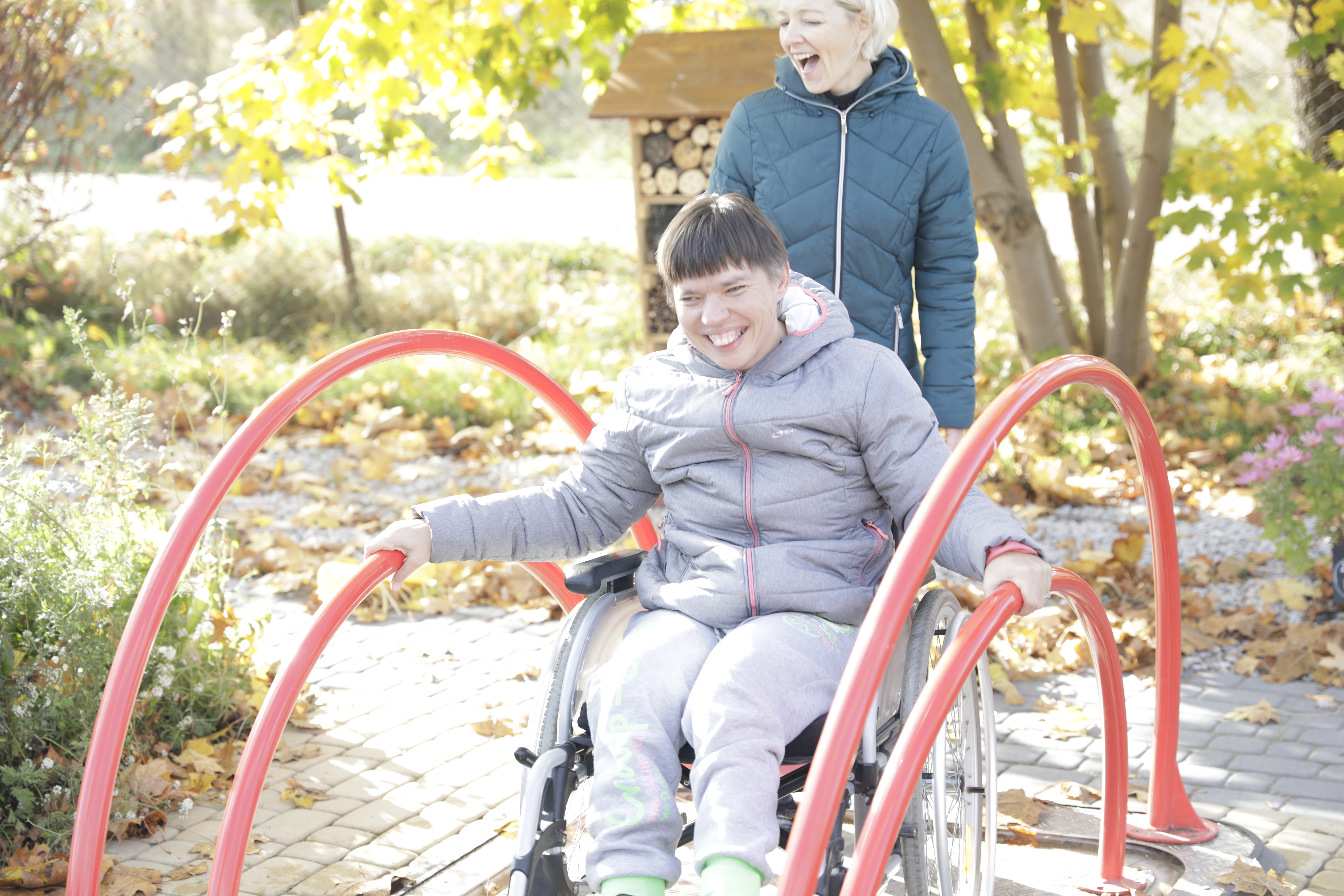
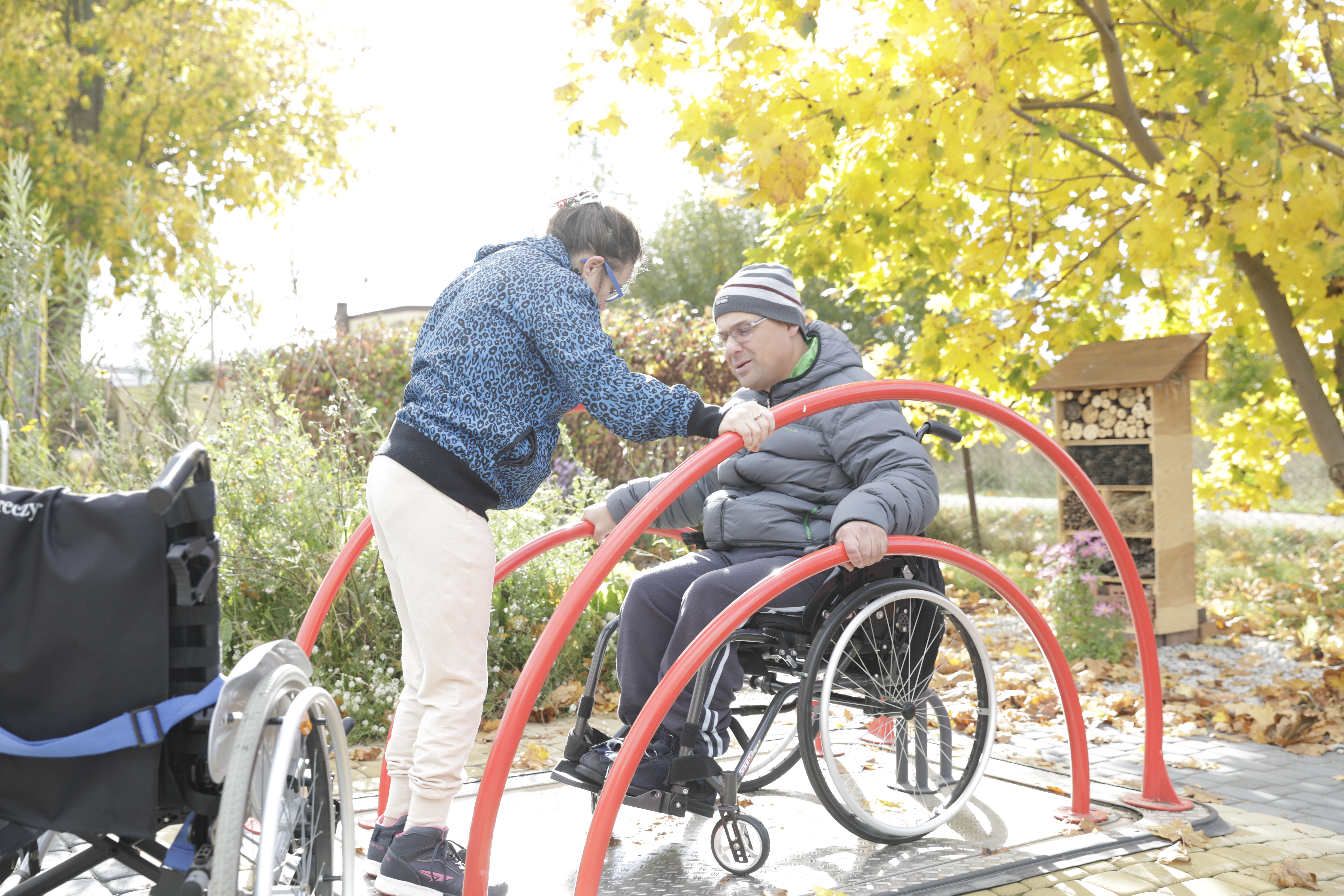
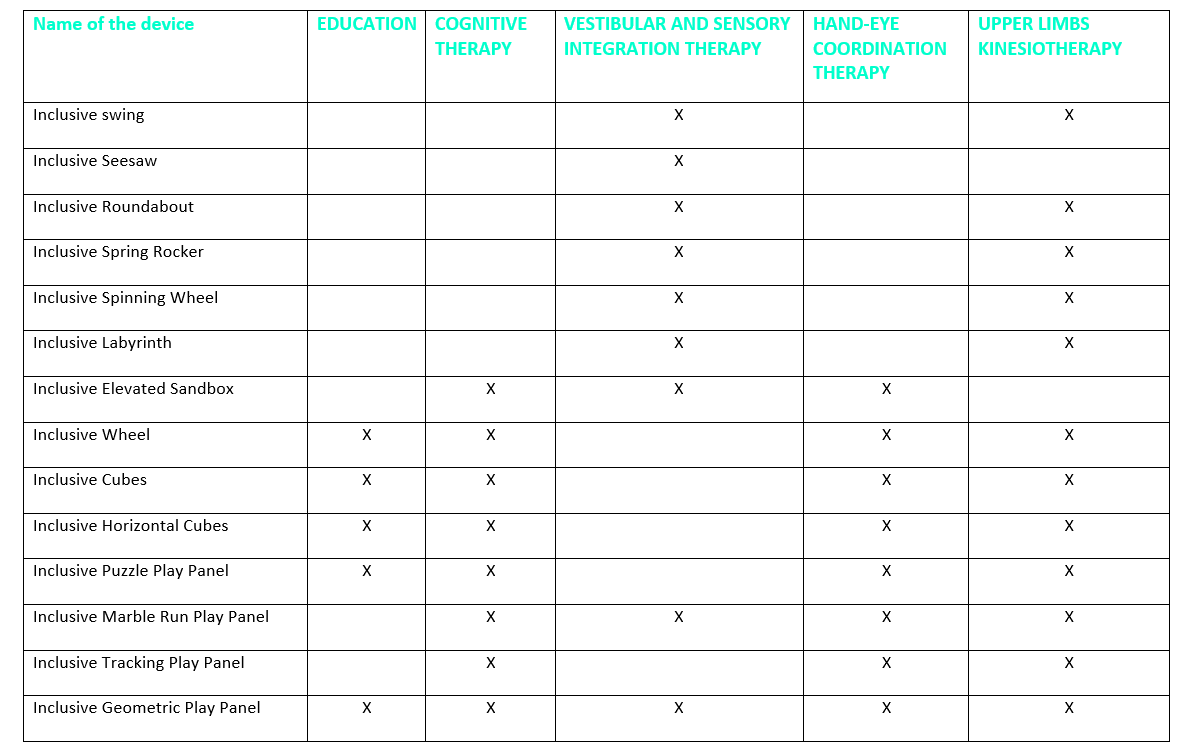
You are not sure how to choose the inclusive device? We will help!
Mariusz Sankowski
Manager
Sales – Medical Products
Rehabilitation devices, Inclusive playground equipment
Poland, North
M: +48 / 609 900 451
mariusz.sankowski@termagroup.pl
Anna Michułka
Manager
Sales – Medical Products
Inclusive playground equipment
Poland, South, Export sales
M: +48 / 607 467 981
anna.michulka@termagroup.pl



